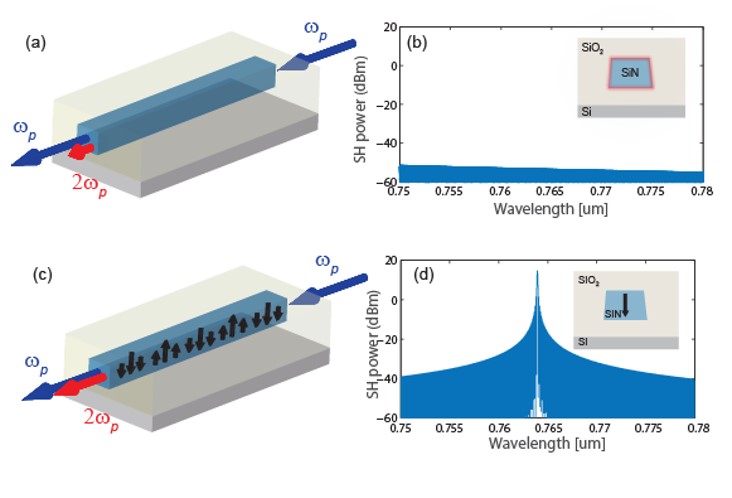Photonic integrated devices for second order nonlinear optical processes


Dates: 01/07/2018 – 31/12/2023
Full on-chip photonic integration holds the promise of bringing advanced optical technologies close to the end user by enabling cheap, compact and efficient devices. Having efficient optical nonlinearity on low loss integrated photonic circuits is key for enabling a wide variety of applications. Yet, despite the remarkable development of the field in the last couple of years there still seems to be an undeniable trade-off between available device functionality, fabrication and integration costs.
Silicon nitride (Si3N4), with tuneable material composition and well-developed CMOS-compatible material processing techniques [is heading towards being the bridging material platform for passive devices, nonlinear components, and high-performance electro-optical modulators. Si3N4 is remarkable owing to its excellent linear optical properties, and has also been exploited for its nonlinear properties, almost solely through the use of its third-order material susceptibility since unfortunately, it does not exhibit second-order susceptibility (χ(2)). This is a crippling weakness for such promising platform given the range of applications enabled by χ(2) processes. State of the art equipment therefore performs second order nonlinear mixing processes off the chip, blocking the route towards low cost miniaturized systems.
With PISSARRO we aim at unlocking second order frequency mixing processes in CMOS compatible platforms with the efficiency and most importantly the flexibility required by many applications. To that end we are studying optically induced self-organized gratings in waveguides, and enable inducing a χ(2) in silicon nitride. In addition, such optical poling methods provide an all-optical control and reconfigurability essential for simple yet universal designs. We will bring on chip essential, yet missing functionalities such as second-harmonic generation, difference-frequency generation, or spontaneous parametric down conversion, that will further anchor integrated photonics as a key enabling technology. It also represents a necessary step to move beyond laboratory grade equipment towards real products by significantly scaling down the form factor but without sacrificing performance.